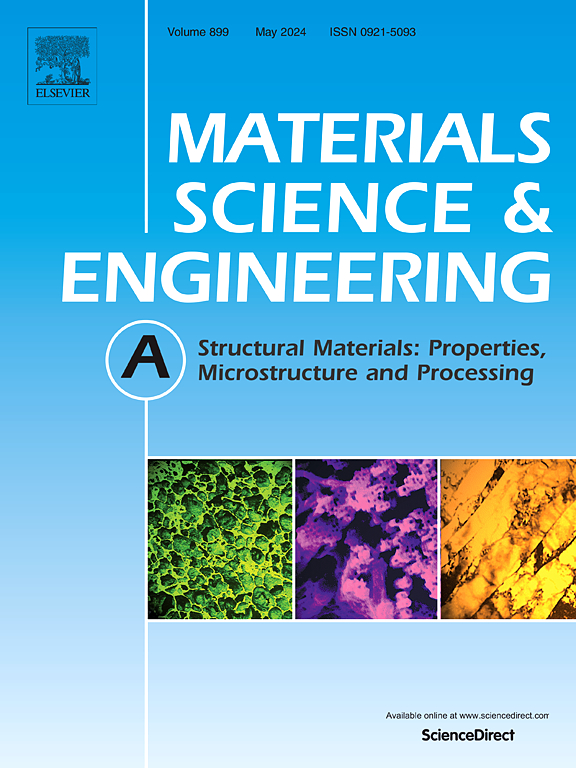Bonding of Al-Si and Ti-Ta dissimilar alloys via hot isostatic Pressing: Microstructure and interface stability
IF 7
2区 材料科学
Q1 MATERIALS SCIENCE, MULTIDISCIPLINARY
引用次数: 0
Abstract
This study proposes a three-dimensional diffusion bonding (3D-DB) strategy for achieving metallurgical joining between Al-Si and Ti-Ta alloys with markedly dissimilar physical and mechanical properties. The technique is applicable to the fabrication of geometrically complex tubular components operating under extreme thermomechanical conditions, where conventional welding methods are often inadequate for ensuring structural and thermal reliability. The 3D-DB process employs gas-phase isotropic pressurization at 130 MPa to suppress unidirectional plastic deformation and promote uniform atomic diffusion at the bonding interface, resulting in the formation of a continuous nanoscale diffusion layer. Microstructural analysis reveals that the Al-Si region undergoes significant plastic deformation, primarily attributed to creep and grain boundary sliding, the Ti-Ta region exhibits a stress-induced β to α″ martensitic transformation. Thermal shock testing shows that the joints maintain consistent shear strength after multiple rapid thermal cycles, demonstrating reliable resistance to thermal cycling. These findings suggest that the 3D-DB technique offers a feasible solid-state bonding solution for dissimilar alloy systems and meets the performance requirements for the aerospace industry's demand for high-performance, thin-walled, and structurally intricate components.
Al-Si和Ti-Ta异种合金热等静压结合:显微组织和界面稳定性
本研究提出了一种三维扩散连接(3D-DB)策略,用于实现物理力学性能明显不同的Al-Si和Ti-Ta合金之间的冶金连接。该技术适用于在极端热机械条件下工作的几何复杂管状部件的制造,传统的焊接方法通常不足以确保结构和热可靠性。3D-DB工艺采用130 MPa的气相各向同性加压,抑制单向塑性变形,促进键合界面原子均匀扩散,形成连续的纳米级扩散层。显微组织分析表明,Al-Si区发生了明显的塑性变形,主要是由蠕变和晶界滑动引起的,Ti-Ta区表现为应力诱导的β到α″马氏体转变。热冲击试验表明,经过多次快速热循环后,接头的抗剪强度保持一致,表现出可靠的抗热循环能力。这些发现表明,3D-DB技术为不同合金系统提供了一种可行的固态粘接解决方案,满足了航空航天工业对高性能、薄壁和结构复杂部件的性能要求。
本文章由计算机程序翻译,如有差异,请以英文原文为准。
求助全文
约1分钟内获得全文
求助全文
来源期刊

Materials Science and Engineering: A
工程技术-材料科学:综合
CiteScore
11.50
自引率
15.60%
发文量
1811
审稿时长
31 days
期刊介绍:
Materials Science and Engineering A provides an international medium for the publication of theoretical and experimental studies related to the load-bearing capacity of materials as influenced by their basic properties, processing history, microstructure and operating environment. Appropriate submissions to Materials Science and Engineering A should include scientific and/or engineering factors which affect the microstructure - strength relationships of materials and report the changes to mechanical behavior.
 求助内容:
求助内容: 应助结果提醒方式:
应助结果提醒方式:


